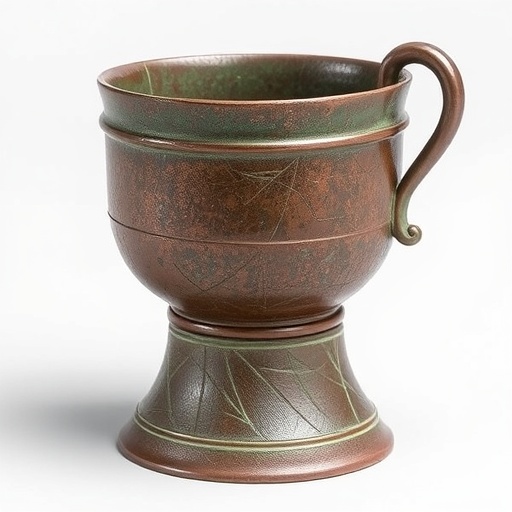In a groundbreaking study published in Archaeological and Anthropological Sciences, researchers have revealed new insights into the complex metallurgical practices of the Southern Trans-Urals during the Bronze Age. This research, spearheaded by Ankushev, Alaeva, and Ankusheva, emphasizes not only the chronology and composition of copper-based artifacts but also sheds light on the social and economic organization surrounding metal production in ancient settlements.
The Southern Trans-Urals region represents a significant intersection of prehistoric exchanges, where cultures from various areas came together, influenced by trade and resource availability. The findings indicate that metallurgical activities were more advanced than previously assumed, showcasing a sophisticated understanding of technology and trade dynamics. By conducting a detailed analysis of artifacts unearthed from various sites, the researchers have constructed a clearer picture of the technological prowess of these ancient societies.
Moreover, the researchers engaged in a meticulous examination of the chemical composition of copper-base artifacts that were produced in this area. They utilized modern analytical techniques, including X-ray fluorescence, to delineate the material characteristics of these objects. This allowed for a comparative analysis with artifacts from parallel archaeological contexts, providing a broader understanding of regional production techniques. The results indicated a distinct signature in the alloy compositions, which points to both localized innovations and external influences from adjacent regions.
Chronologically, the study maps the technological advancements and shifts in production practices over several centuries. By dating the artifacts using radiocarbon dating methods, researchers were able to establish a timeline that connects changes in metalwork with societal changes, revealing how the socio-political landscape influenced metallurgical practices. This interconnectedness of technology and society paints a broader picture of how ancient people adapted to their environments and utilized available resources.
The organization of metal production in these settlements also represents a fascinating aspect of the research. Findings suggest that metallurgy likely played a central role in the social fabric, possibly as a means of establishing status or community identity. Evidence points towards specialized workshops where skilled artisans collaborated, thereby fostering a sense of community amongst metalworkers. This collaboration not only enhanced production efficiency but also likely encouraged knowledge transfer across generations, a key factor in the advancement of technology.
Intriguingly, the study also underscores the role of trade networks in the proliferation of metallurgical knowledge and materials. The Southern Trans-Urals served as a hub for the exchange of metals and metalworking techniques that extended well beyond its local confines, establishing links with distant territories. Such trade networks fostered an environment of innovation, where new methodologies could flourish based on shared knowledge between cultures.
Additionally, the implications of these findings stretch beyond mere artifact analysis. They challenge previous assumptions regarding the socio-economic structures of Bronze Age societies in the region. Rather than being viewed as isolated, these societies were interconnected, engaging in complex trade systems that would have fundamentally shaped their development. Understanding these dynamics contributes significantly to our overall grasp of Bronze Age civilizations.
Furthermore, the copper-base artifacts analyzed in this research add a new dimension to our appreciation of ancient artistry. Intricate designs and production techniques found in these items indicate that aesthetic considerations were paramount in their creation. This level of artistry reflects not just practical achievements, but a cultural investment in the visual and symbolic significance of these items, suggesting that they played a vital role in social rituals and exchanges.
In conclusion, this study provides an invaluable contribution to our understanding of the Alakul culture and its metallurgical practices. By integrating archaeological data with advanced compositional analysis, the researchers have illuminated a previously unappreciated narrative within the Southern Trans-Urals region. As scholars continue to explore these ancient societies, such groundbreaking research will play a crucial role in revealing how technological advancements were rooted in the everyday lives and social structures of those who lived during the Bronze Age.
Through their examination of the Alakul metal production, Ankushev, Alaeva, and Ankusheva have not only enriched our understanding of ancient metallurgy but have also fostered a deeper appreciation for the interconnections that sustained these communities. Their findings open up new avenues for future research, inviting scholars to delve deeper into the realm of ancient technologies, social structures, and trade practices.
As the field of archaeological sciences advances, studies like this one will continue to reshape our perspective on humanity’s past, reminding us that the echoes of ancient crafts linger still, waiting to unveil their secrets to curious minds willing to listen.
Subject of Research: Southern Trans-Urals Bronze Age metallurgy
Article Title: New data on the chronology, composition of copper-base artifacts and the organization of the Alakul metal production in the Southern Trans-Urals Bronze Age settlements.
Article References:
Ankushev, M.N., Alaeva, I.P., Ankusheva, P.S. et al. New data on the chronology, composition of copper-base artifacts and the organization of the Alakul metal production in the Southern Trans-Urals Bronze Age settlements.
Archaeol Anthropol Sci 17, 228 (2025). https://doi.org/10.1007/s12520-025-02347-8
Image Credits: AI Generated
DOI: https://doi.org/10.1007/s12520-025-02347-8
Keywords: Southern Trans-Urals, Bronze Age, metallurgy, copper-base artifacts, archaeological science, trade networks, technological advancement, Alakul culture.




